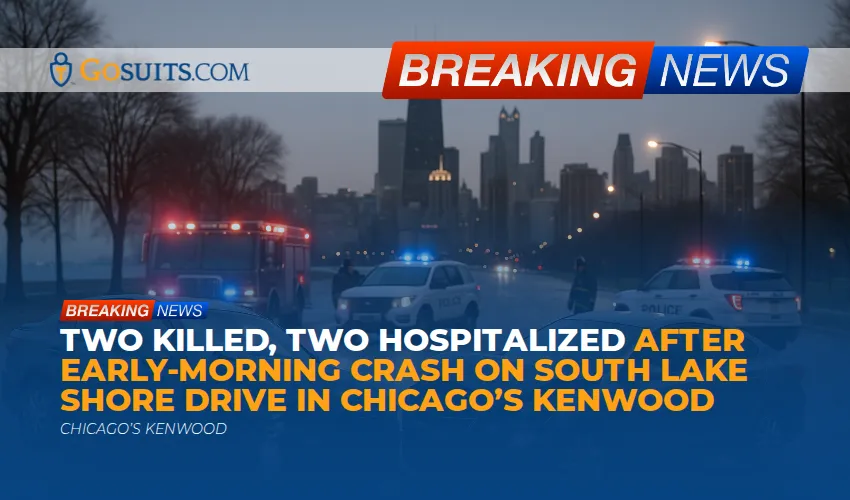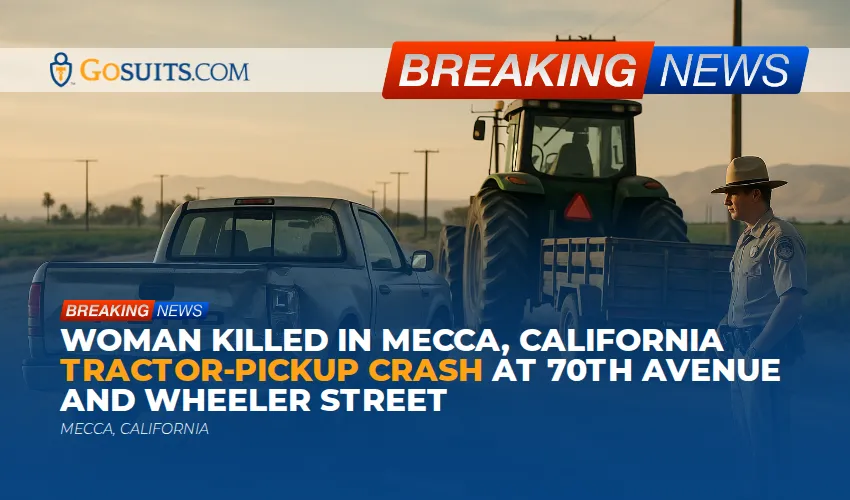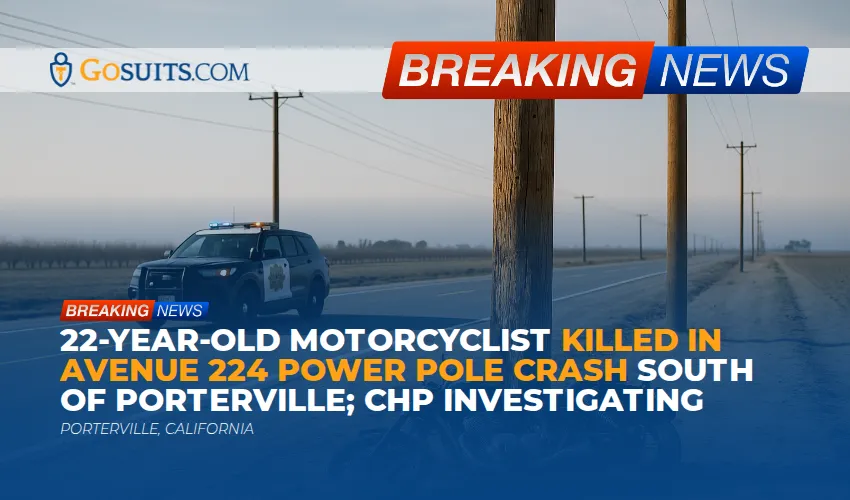- What should you do immediately after a crash before you file a State Farm claim?
- How do you file a State Farm claim step-by-step?
- Which Texas, California, and Illinois rules could affect your State Farm claim?
- What can you do if State Farm denies your claim or disputes fault?
- What common mistakes should you avoid in a State Farm auto claim?
- How do you document injuries and property damage to strengthen your claim?
- What are quick answers to frequent questions about State Farm auto claims?
- Why speak with a lawyer before giving a recorded statement to State Farm?
- How do settlements, releases, and taxes work in State Farm claims?
- How do medical liens and subrogation affect your State Farm settlement?
- How can GoSuits help with a State Farm auto claim in TX, CA, and IL?
- Where can you find authoritative resources and consumer protections?
What should you do immediately after a crash before you file a State Farm claim?
In the moments after a collision, your safety and health come first. If you are in Texas, California, or Illinois, similar core steps apply, with a few state-specific responsibilities that can affect any later insurance claim. These actions help protect you no matter whether you are the injured person seeking compensation or the person accused of causing the crash.
Document the scene safely
- Call 911 for injuries. Emergency response and a police report preserve key facts. Nationally, crashes are a leading cause of injury; in 2022, 42,795 people died in motor vehicle traffic crashes in the U.S. (Source: NHTSA, 2022 Motor Vehicle Crashes Overview).
- Move vehicles only if safe and required. Turn on hazard lights, set out cones or triangles if available.
- Exchange information. Names, addresses, driver’s license numbers, vehicle makes/plates, and insurance details.
- Take photos and video. Damage, positions of vehicles, skid marks, debris, traffic signals, intersection layout, weather, and any visible injuries.
- Identify witnesses. Get names and contact information.
Report the crash as your state requires
- Texas: Drivers must immediately report certain crashes to law enforcement, including those involving injury, death, or vehicle damage that prevents safe normal operation (see Tex. Transp. Code § 550.026).
- California: If anyone is injured or property damage exceeds $1,000, you must submit an SR‑1 to the DMV within 10 days, even if police responded (CA DMV SR‑1).
- Illinois: Certain crashes must be reported to law enforcement, and drivers may have additional reporting obligations under state crash laws; see state guidance and forms through IDOT (IDOT Crash Reports) and Illinois Vehicle Code reporting provisions such as 625 ILCS 5/11-406 et seq..
Get medical evaluation promptly
- Go to urgent care or your doctor the same day if possible. Delays can harm your health and make it harder to connect injuries to the crash.
- Tell providers about all symptoms, including delayed pain, headaches, dizziness, or numbness.
Preserve evidence and communications
- Keep all receipts for towing, rental cars, medications, co-pays, and repairs.
- Save dashcam footage and vehicle data when possible. Spoliation of evidence can affect cases; courts can impose sanctions for lost electronically stored information in some contexts (see Fed. R. Civ. P. 37(e)).
- Avoid social media posts about the crash and injuries.
Notify insurers without giving a detailed statement yet
- Report the crash to your own insurer as required by your policy, but you can delay any recorded statement until you understand your rights.
- If State Farm insures the other driver, you can open a third-party claim for property damage, but you can wait to provide a detailed statement until you have legal guidance.
How do you file a State Farm claim step-by-step?
These steps apply whether you are filing a State Farm auto claim under your own policy (first-party) or against a State Farm-insured driver (third-party). In cities like Houston, Dallas, Austin, San Antonio, Los Angeles, San Diego, San Francisco, Sacramento, Chicago, Aurora, Naperville, or Springfield, the process is similar, but state law can affect deadlines and rights.
When and how should you notify State Farm of the crash?
- Use the insurance information on your ID card. The State Farm claim phone number is listed on your insurance ID card and on their mobile app. If you’re a third party, you can find contact details on the exchange-of-information form or police report. You can start the process by calling State Farm’s claims phone number at 800-SF-CLAIM or 800-732-5246.
- Give basic facts first. Date, time, location, vehicles, and known injuries. You can politely decline a recorded statement until you’re ready.
- Open both claims if needed. For example, a first-party collision claim for your car repairs and a third-party bodily injury claim if the other driver is at fault.
What information and documents should you gather for the claim?
- Police report number and agency.
- Photos/videos of damage, scene, and injuries.
- Witness contact information.
- Medical records and bills, discharge instructions, diagnostic imaging, and therapy notes.
- Lost wage documentation such as employer letters, pay stubs, tax records, and schedules.
- Repair estimates, parts invoices, and rental or rideshare receipts.
Should you give a recorded statement to State Farm right away?
Recorded statements can be used against you. In litigation, a statement by a party can be treated as non-hearsay when offered against that party (see Fed. R. Evid. 801(d)(2)). You can politely say you will provide a written statement after reviewing your notes or after speaking with a lawyer. If you are an insured making a first-party claim, your policy may require cooperation, but you can still request reasonable time to obtain counsel.
How do State Farm property damage and bodily injury claims differ?
- Property damage: Adjusters typically inspect your vehicle, approve repairs, consider total loss thresholds, and address rental cars. You may have the right to choose your own repair shop. Keep all estimates and invoices.
- Bodily injury: Adjusters evaluate liability, medical treatment, causation, wage loss, and pain and suffering. Be careful with broad medical authorizations that allow sweeping access to your history. You can limit releases to treatment related to the crash and appropriate prior conditions. Your HIPAA rights govern your health information (see HHS HIPAA Information).
What does a typical State Farm claim timeline look like?
Timeframes vary by state rules and claim type. As a general outline:
- Claim setup: Within days of notice, you should have a claim number and an adjuster assigned.
- Investigation: Statements, scene review, photos, and police report. For first-party claims, your policy and state law may define prompt-payment timelines (see Texas and California sections below).
- Treatment and documentation: Injury claims often should not be resolved until you complete treatment or reach maximum medical improvement.
- Demand package: A written presentation of liability, injuries, medical bills, lost wages, and supporting evidence.
- Negotiation: Exchanges of offers and counteroffers. If negotiations stall, options include mediation, filing a complaint with the state insurance department, or filing a lawsuit within the statute of limitations.
How long do you have to file a claim or lawsuit against a State Farm-insured driver?
Insurance policies require prompt notice, but the ultimate deadline is the statute of limitations for filing a lawsuit in your state:
- Texas: Generally 2 years for personal injury and property damage (see Tex. Civ. Prac. & Rem. Code § 16.003).
- California: Generally 2 years for personal injury (Cal. Code Civ. Proc. § 335.1).
- Illinois: Generally 2 years for personal injury (735 ILCS 5/13‑202).
Shorter or longer deadlines can apply in special cases, including claims against government entities. If you are in Harris County, Travis County, Cook County, Los Angeles County, Orange County, Riverside County, or nearby regions, be mindful of local rules when government vehicles are involved.
Which Texas, California, and Illinois rules could affect your State Farm claim?
Understanding the law in your state helps you anticipate what State Farm can request, how long the company has to respond, and how fault impacts your recovery. This matters whether you are a plaintiff seeking damages or a defendant trying to limit exposure.
How do Texas insurance and accident rules impact your claim?
- Accident reporting: Drivers must immediately report certain crashes to law enforcement (Tex. Transp. Code § 550.026).
- Comparative fault: Texas uses proportionate responsibility. You cannot recover if you are more than 50% at fault; otherwise your recovery is reduced by your fault percentage (Tex. Civ. Prac. & Rem. Code ch. 33).
- Prompt-payment rules: Texas has deadlines for acknowledging, investigating, and paying first-party claims. See the Texas Insurance Code chapter on prompt payment (Tex. Ins. Code ch. 542) and consumer guidance from the Texas Department of Insurance.
- PIP and MedPay: Texas insurers must offer Personal Injury Protection; you must reject it in writing if you do not want it (Tex. Ins. Code § 1952.152). PIP can pay medical bills and limited lost income regardless of fault.
- Local note: In Houston, Dallas, Austin, San Antonio, and across Central Texas, crash volumes are significant, which can affect report processing times. TxDOT maintains statewide crash data and records access.
How do California fair-claims rules shape the State Farm process?
- Fair Claims Settlement Practices: California regulations set timelines and standards insurers must follow, such as acknowledging claims, investigating, and accepting or denying claims within a reasonable time, generally 40 days after receiving proof of claim (CA DOI Fair Claims Regulations).
- Comparative fault: California uses pure comparative negligence, which means your recovery is reduced by your percentage of fault, even if you are primarily at fault (Li v. Yellow Cab Co., 13 Cal. 3d 804).
- Accident reporting: File an SR‑1 with the DMV within 10 days if anyone is injured or property damage exceeds $1,000 (CA DMV).
- MedPay: Medical Payments coverage is optional; California does not require PIP (see the California auto policy guide at the Department of Insurance).
- Local note: In Los Angeles, San Diego, San Francisco, Sacramento, Orange County, Riverside, and the Bay Area, busy road networks and frequent collisions can lengthen investigation times, so keep your documentation organized.
What Illinois rules matter for a State Farm auto claim?
- Comparative fault: Illinois uses modified comparative negligence. If you are more than 50% at fault, you cannot recover; otherwise, your recovery is reduced by your fault percentage (735 ILCS 5/2‑1116).
- Unfair claim practices: The Illinois Insurance Code identifies unfair claims practices, including failing to acknowledge communications or attempting to settle for less than a reasonable amount (215 ILCS 5/154.6).
- Accident reporting: Illinois law requires reporting certain crashes to law enforcement; IDOT provides crash reporting information and forms (IDOT).
- Local note: In Chicago, Cook County, Aurora, Naperville, and Springfield, dense traffic increases the importance of quick documentation and timely medical evaluation.
What can you do if State Farm denies your claim or disputes fault?
Claim denials or low offers can happen in both property damage and bodily injury claims. You have options whether you are in TX, CA, or IL.
- Request the denial reasons in writing. Ask for the specific policy provisions and facts relied upon.
- Submit a targeted response. Provide missing records, clarify prior conditions, and address any comparative fault allegations with photos, measurements, and witness statements.
- File a consumer complaint with your state insurance department. Regulators monitor claim handling conduct. See Texas DOI complaint portal, California DOI complaint portal, and Illinois DOI complaint portal.
- Consider mediation. Many disputes resolve with neutral facilitation.
- File a lawsuit within the statute of limitations. This preserves your rights if negotiation fails. Depending on the amount and issues, cases can be filed in small claims or civil courts; see official court self-help for California, Texas, and Illinois.
What common mistakes should you avoid in a State Farm auto claim?
- Giving a broad recorded statement too early. Stick to basic facts until you have counsel. Small inconsistencies can be used to challenge credibility.
- Signing blanket medical authorizations. Limit releases to reasonable, relevant records connected to the crash period.
- Delaying medical care. Gaps in treatment can be argued as proof of no injury, even if you were managing pain at home.
- Posting on social media. Photos or comments can be misconstrued.
- Ignoring comparative fault. Address allegations with tangible evidence: lane markings, point-of-impact photos, ECU data, or traffic signal timing where applicable.
- Repairing or disposing of the vehicle too soon. Document damage thoroughly and allow inspection. Preserve critical parts if a defect or component failure could be an issue.
- Missing state reporting obligations. For example, California’s SR‑1 within 10 days in injury or $1,000+ damage crashes (CA DMV).
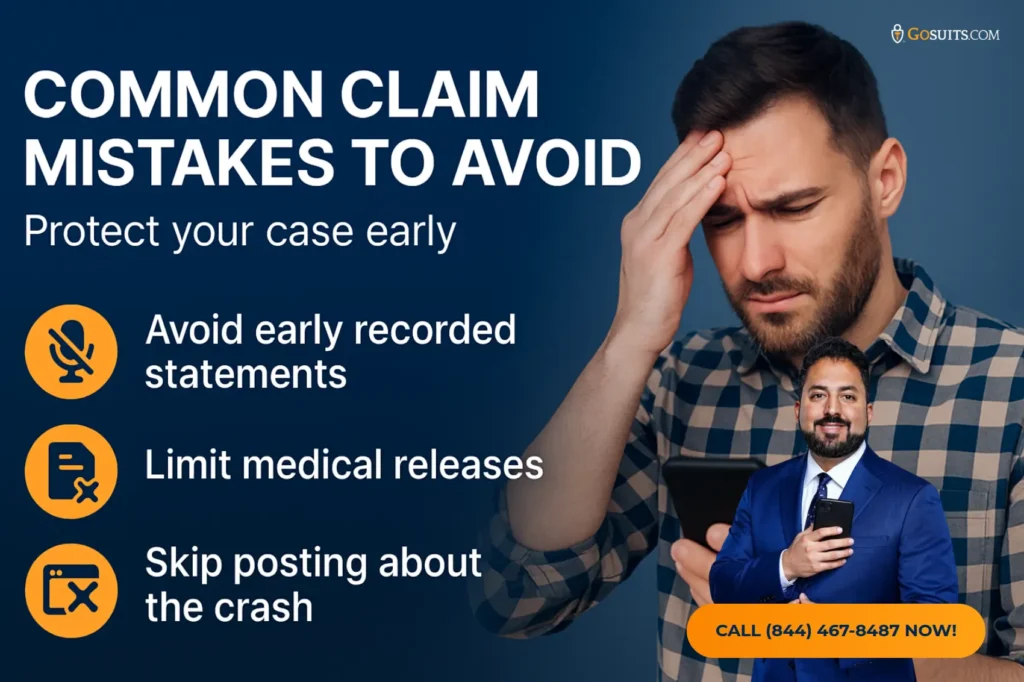
How do you document injuries and property damage to strengthen your claim?
Well-organized documentation can shorten the claim timeline and improve accuracy. Medical and economic losses add up quickly; crash deaths alone produce enormous societal costs in the U.S. each year (Source: CDC Transportation Safety: Costs).
- Medical timeline: Create a simple chronology with dates of ER visits, follow-ups, imaging, therapy, and medications. Include pain levels and functional limits.
- Billing and insurance: Keep itemized bills, Explanation of Benefits, and proof of out-of-pocket payments. Separate health insurance payments from balances owed.
- Lost income: Save pay stubs, tax forms, employer letters on missed hours, and notes on reduced duties or overtime loss.
- Property damage file: Include estimates, photos from all angles, repair invoices, parts lists, pre-loss photos if available, and communications with shops.
- Out-of-pocket costs: Towing, storage, rental car, rideshare, parking at medical appointments, adaptive equipment, and childcare.
- Daily life impacts: Brief notes on sleep, mobility, driving anxiety, and activities you had to modify or stop.
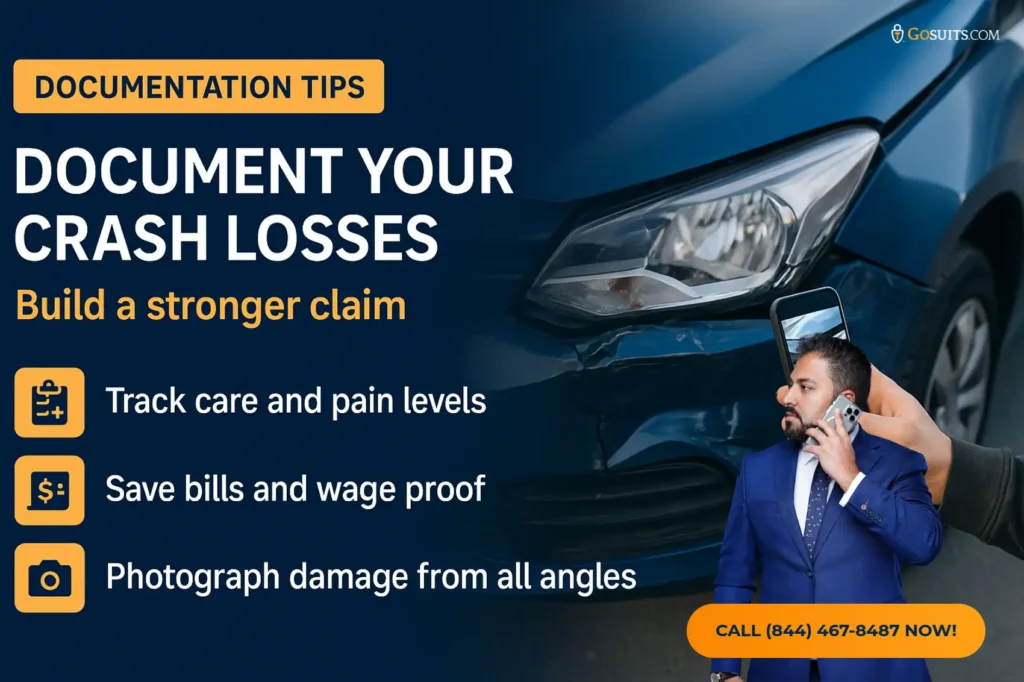
What if you are the defendant or your insurer disputes your liability?
- Preserve your evidence as thoroughly as a claimant would. Keep dashcam data and phone location data if relevant and lawful.
- Identify exonerating facts: Sun glare, obscured signage, sudden medical emergency, or third-party road hazards, where supported by evidence and applicable law.
- Use objective records: Vehicle data, CAD drawings of the scene, or time-stamped surveillance footage can be pivotal.

What are quick answers to frequent questions about State Farm auto claims?
How do you find the State Farm claim phone number?
Check your State Farm insurance ID card or the insurer’s mobile app. If you are a third party, use the number provided by the State Farm-insured driver or the claim number if one was assigned after you reported the loss.
How long does State Farm have to respond to your claim?
Response time can depend on state rules and whether the claim is first-party or third-party.
- Texas: The Texas Insurance Code sets deadlines for acknowledging, investigating, and paying first-party claims, with specific notice and payment windows (Tex. Ins. Code ch. 542). TDI provides consumer guidance on these timelines (TDI).
- California: California’s Fair Claims Settlement Practices Regulations generally require acceptance or denial within a reasonable time after proof of claim, often 40 days (CA DOI).
- Illinois: Illinois law identifies unfair claims practices, including failing to promptly acknowledge communications or offer reasonable settlements when liability is clear (215 ILCS 5/154.6).
How long do you have to file a State Farm car accident claim or lawsuit?
Policies require prompt notice, but lawsuit deadlines are governed by state statutes of limitations. As noted above, TX, CA, and IL generally allow two years for injury claims (Texas, California, Illinois), with exceptions.
What if State Farm says you were partly at fault?
Fault allocation reduces your recovery in all three states. Texas and Illinois bar recovery if you are more than 50% at fault (Texas; Illinois). California reduces damages by your percentage of fault without a bar (Li v. Yellow Cab). Also, consult with an attorney because the State Farm decision of fault is truly irrelevant when it comes to Trial. It is the jury that makes that decision.
Can you use PIP, MedPay, or health insurance while a State Farm claim is pending?
Yes, if available under your policy or plan. Texas PIP can pay some bills regardless of fault (Tex. Ins. Code § 1952.152). In CA and IL, MedPay and health insurance may cover treatment while the liability claim is investigated (see CA DOI Auto Policy Guide and Illinois DOI Auto Insurance Consumer Info).
Why speak with a lawyer before giving a recorded statement to State Farm?
Talking to a lawyer can help you avoid common traps and meet required deadlines. Your lawyer can:
- Prepare a focused statement that covers the facts without speculation.
- Protect privacy by tailoring medical releases to relevant dates and providers, consistent with HIPAA rights (HHS).
- Manage comparative fault issues by highlighting objective evidence and applicable traffic rules.
- Invoke state protections like prompt-payment rules and fair-claims standards in TX, CA, and IL.
Many people underestimate how easily a recorded statement can be misconstrued. In litigation, your statements can be used against you as admissions (Fed. R. Evid. 801(d)(2)). Speaking with counsel first is prudent.
How do settlements, releases, and taxes work in State Farm claims?
- Settlement agreement and release: Before payment, insurers require a signed release. Read carefully; it typically resolves all claims arising from the crash against specified parties. Do not sign until treatment is stable or you understand the risks of settling early.
- Allocation between property and injury: Keep payments distinct for property damage versus bodily injury to avoid confusion about what is resolved.
- Tax considerations: In general, compensatory damages for personal physical injuries or physical sickness are excluded from income under Internal Revenue Code § 104(a)(2), while certain interest or punitive damages may be taxable. See IRS Topic No. 511 on damages and settlements (IRS Topic 511).
- First-party versus third-party checks: First-party checks may include your lienholders or medical providers if assignments exist. Third-party property checks sometimes include body shops or lenders.
How do medical liens and subrogation affect your State Farm settlement?
Medical liens and subrogation claims can reduce your net recovery if not addressed early.
- Health insurance subrogation: Many plans seek reimbursement from your settlement. ERISA or state law may apply depending on the plan type.
- Medicare: If Medicare paid for crash-related care, the Medicare Secondary Payer rules require reimbursement. You will need a conditional payment letter and final demand (see CMS BCRC).
- Medicaid: State Medicaid programs often assert liens that must be addressed according to state law. See program information via Medicaid.gov.
- Provider liens: Some providers file statutory liens or treat on a letter of protection. Validate amounts, date ranges, and coding accuracy.
Resolving liens is key before finalizing settlement, so that checks can be disbursed correctly and you do not face post-settlement collection issues.
How can GoSuits help with a State Farm auto claim in TX, CA, and IL?
If you were injured in a car crash and are facing a State Farm insurance claim in Texas, California, or Illinois, a free consultation with a personal injury lawyer can clarify your next steps. We listen first, then help you navigate statements, documentation, medical bills, and settlement timing in a way that protects your rights under state law.
- Where we practice: We represent clients across Texas, California, and Illinois, including Houston, Dallas, Austin, San Antonio, Los Angeles, San Diego, San Francisco, Sacramento, Chicago, Aurora, Naperville, and beyond.
- Technology-driven approach: GoSuits uses proprietary software to organize evidence, track medical records and bills, and model negotiation scenarios. That means faster information flow, fewer bottlenecks, and better preparation for each step of the State Farm claim process.
- Exclusive tools for speed and clarity: Our in-house platform centralizes police reports, photos, estimates, wage documentation, and lien data, giving you and your attorney a shared, real-time picture of the case.
- Leadership in innovation: We continuously refine litigation analytics and workflow automation so your case moves without unnecessary delays.
- Direct access to your attorney: Although we leverage technology to expedite cases, every client has a designated attorney and unfettered access to that attorney. We do not use case managers to stand between you and your lawyer.
- Trial-ready mindset: Insurers evaluate risk differently when they face lawyers who try cases. Our team has 30 years of combined experience and meaningful trial experience, which helps us build claims to withstand scrutiny and, when necessary, present them to a jury.
- Past results: We are proud of our outcomes for clients across TX, CA, and IL. You can review representative matters here: gosuits.com/prior-cases. Results depend on facts and law; past outcomes do not guarantee future results.
- Practice areas: Motor vehicle collisions, rideshare crashes, commercial vehicle and trucking cases, pedestrian and bicycle injuries, premises liability, and wrongful death.
Whether you are facing a denied State Farm claim, a disputed liability argument, or mounting medical bills, our combination of human advocacy and purpose-built software is designed to move your case forward efficiently while keeping you fully informed.
Where can you find authoritative resources and consumer protections?
- Crash facts and safety statistics
- Texas
- Report requirements and crash chapter: Tex. Transp. Code § 550.026
- Comparative fault: Tex. Civ. Prac. & Rem. Code ch. 33
- Statute of limitations: Tex. Civ. Prac. & Rem. Code § 16.003
- Prompt payment of claims: Tex. Ins. Code ch. 542
- PIP offer requirement: Tex. Ins. Code § 1952.152
- Consumer complaints: Texas DOI
- California
- Fair Claims Settlement Practices: California DOI
- SR‑1 crash reporting: CA DMV
- Statute of limitations for injury: CCP § 335.1
- Pure comparative negligence: Li v. Yellow Cab, 13 Cal. 3d 804
- Auto policy basics: California DOI
- Consumer complaints: California DOI
- Illinois
- Comparative fault statute: 735 ILCS 5/2‑1116
- Statute of limitations for injury: 735 ILCS 5/13‑202
- Unfair claims practices: 215 ILCS 5/154.6
- Crash reporting information: IDOT
- Consumer complaints: Illinois DOI
- Courts and small claims
- California Small Claims: courts.ca.gov
- Texas Small Claims (Justice Court): Texas State Law Library Guide
- Illinois Small Claims: illinoiscourts.gov
- Evidence and privacy
- Party admissions rule: Fed. R. Evid. 801(d)(2)
- ESI preservation and sanctions: Fed. R. Civ. P. 37(e)
- HIPAA rights: HHS
- Medicare and Medicaid liens
- Medicare Secondary Payer and BCRC: CMS
- Medicaid program information: Medicaid.gov
- Taxes on damages and settlements
- IRS Topic No. 511: IRS
How to file a State Farm claim: What are the step-by-step essentials you can follow today?
Here is a concise checklist you can start using now in TX, CA, or IL, whether you are in Harris County, Travis County, Cook County, or elsewhere in Southern California or the Bay Area:
- Safety and reporting: Get medical help, call police, and complete any required DMV/IDOT/Texas reporting.
- Open the claim: Contact State Farm using the claim number or insurance card details. Provide essential facts; reserve detailed statements.
- Collect and preserve evidence: Scene photos, vehicle damage, medical records, wage proof, rental receipts.
- Direct billing where possible: Use PIP/MedPay/health insurance to keep treatment moving while liability is reviewed.
- Control information flow: Limit medical authorizations to relevant providers and dates. Keep copies of everything you send.
- Send a complete demand package: Liability narrative, medical chronology, bills, wages, and proof of other losses. Organize by categories.
- Negotiate professionally: Evaluate offers against documented losses and state comparative fault rules.
- Protect lien resolution: Obtain lien amounts in writing and negotiate where allowed before finalizing settlement.
- Confirm the release scope: Make sure the release matches the intended parties and claims before signing.
- File suit on time if needed: Know your statute of limitations and calendar it early.

How do plaintiff and defendant perspectives both matter in State Farm car accident claims?
Every collision claim has two civil perspectives, and understanding both can move a claim to resolution faster.
- From the plaintiff side: You must prove liability, causation, and damages. Objective evidence and timely medical care are crucial.
- From the defendant side: You challenge elements of liability, question causation, and quantify damages. Promptly preserving favorable evidence and engaging defense resources helps ensure accuracy.
- Comparative fault is pivotal: Where fault is shared, both sides benefit from clear, objective evidence such as vehicle damage alignment, time-stamped video, or traffic signal timing data.
- Settlement dynamics: Risks of litigation, statute-of-limitations pressure, lien impacts, and trial readiness influence case value from both vantage points.
How do you tailor your approach for local realities in Texas, California, and Illinois?
- Texas (Houston, Dallas, Austin, San Antonio): Use Texas prompt-payment rules for first-party claims to keep things moving. Apply proportionate responsibility defenses or counterarguments early.
- California (Los Angeles, San Diego, San Francisco, Sacramento, Orange County, Riverside, Bay Area): Invoke California’s Fair Claims regulations to track timelines. Expect pure comparative fault arguments and gather strong causation evidence.
- Illinois (Chicago, Cook County, Aurora, Naperville, Springfield): Prepare for modified comparative negligence thresholds. Use Illinois unfair claims practices law to escalate claim handling issues when necessary.
What State Farm accident claim tips can help you stay organized from day one?
- Create a claim binder or digital folder by category: police, medical, wage, property, photos, correspondence.
- Use a single point of contact for communications to avoid mixed messages and inconsistent statements.
- Keep a call log with dates, names, and summaries of all insurance communications.
- Calendar deadlines including DMV/IDOT reporting, demand response dates, lien verifications, and statutes of limitations.
What to do after a car accident: Can checklists and timelines reduce stress?
Yes. The right checklists and a clear timeline relieve decision pressure. Millions of crashes occur every year in the U.S., and structured steps help you prioritize health, preserve rights, and meet state requirements (NHTSA crash overview: federal data).



